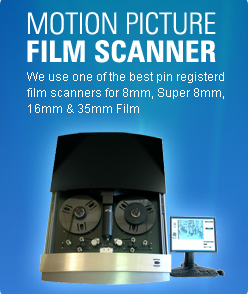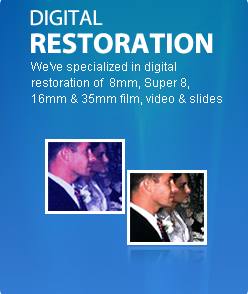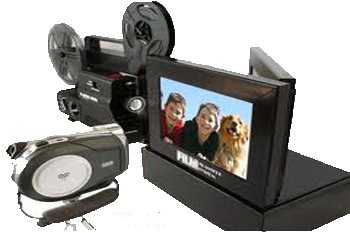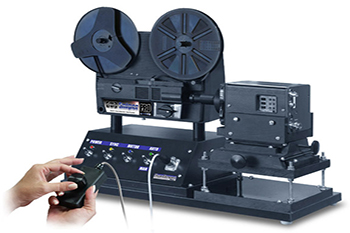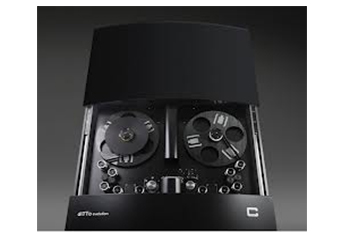
Film Conversion Equipment
Film Scanning and Film Transfer Equipment Types
The type of film scanning machine used for your 8mm, Super 8 or 16mm film conversion will have as much of an impact on the quality you receive as the resolution of the scan itself will. For example, if you wanted to digitize a photograph and tried doing it two different ways. You first put the photograph down on a table and took a picture of it using your smart phone or camera. Then you took the picture and scanned it using a flatbed scanner. If you compare the two side by side on your computer it will become really obvious that the flatbed scanner produced a digital image as good as the photograph. However, the picture you took with your phone or camera does not look close to the quality of the original photograph.
The same goes for scanning your 8mm, Super 8 or 16mm film. The real-time and frame by frame machines below are using a camcorder to take a picture of your film. The motion picture film scanner and Datacine machine are scanning the film. The results will be significantly different.
Film Conversion Equipment |
|
Real Time
|
|
Frame by Frame
|
|
Professional Film Scanners
|
|
Equally important as resolution is the type of film transfer. There are a few basic types of film transfer processes. More than 80% of the companies out there today use a real-time transfer. Any type of real-time film transfer will result in video that is 40-50% worse than the film’s current condition.
So, at this point you’ve learned that film transfers can capture at standard definition (480 lines), high definition (1080 lines) or 2K (1556 lines). You’ve also learned about the 3 different types of film transfers being used today. In order from least to best quality we have:
The film transfer processes above are the basics types and do not include any restoration by themselves. Restoration comes in many different capabilities from color and exposure correction, to grain elimination, to stabilization
Tucson Fun Facts: Today, Tucson is a growing city of over a half million residents and the heart of a booming high-technology region with more than 1,200 companies employing more than 50,000 people. Among its industries are aerospace and missile production, computer hardware and software, optics, biotechnology and electronics. The city is committed to further growth, with technology at the core. Tucson's superb climate and delightful blend of American, Hispanic and Native American cultures make it one of America's favorite tourist destinations.
Arizona Fun Facts: Copper was discovered in 1854, and copper mining was Arizona’s premier industry until the 1950s. After World War II, the widespread availability of refrigeration and air conditioning caused Arizona’s population to boom and Phoenix to become one of the fastest growing cities in America. Arizona is the sixth largest state in the country in terms of area. Its population has always been predominantly urban, particularly since the mid-20th century, when urban and suburban areas began growing rapidly at the expense of the countryside.
